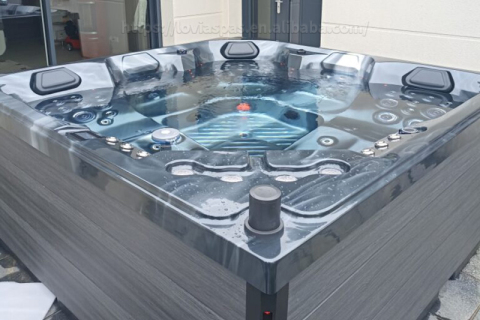
News
Close the drain valve of the jacuzzi bathtub and use a drain pump or hose to drain the water. Use a cleaner suitable for the surface material of the bathtub, such as a mild multi-purpose cleaner or a special jacuzzi bathtub cleaner, and use a soft cloth or sponge to clean the inner wall and bottom of the bathtub.
Generally speaking, it is relatively safe to use a hot tub when the outdoor temperature is above 32°F (0°C). Although it is possible to use a hot water tub outdoor in an environment below freezing, this requires ensuring that the hot tub has a good insulation system to prevent the heating system from being overloaded or the equipment from being damaged.
Large freestanding hot tubs Large freestanding spa bathtubs are suitable for families with spacious bathrooms who want the ultimate in comfort and relaxation. Large freestanding spa bathtubs are typically 70 to 75 inches long, 32 to 40 inches wide, and 28 to 36 inches high.
If the outdoor whirlpool hot tub water itself contains a large amount of minerals, especially alkaline substances such as calcium carbonate, the use of ozone may accelerate the precipitation reaction of these minerals, resulting in an increase in pH.
Unlike built-in bathtubs, freestanding whirlpool bathtubs are not fixed to the wall, but rely entirely on the support frame at the bottom of the bathtub to maintain stability. The support frame is usually made of metal or high-strength plastic and has sufficient load-bearing capacity to ensure that the whirlpool bathtub will not tilt or tip over.
if the spa Jacuzzi tub is mainly used for daily leisure at home and there are fewer family members, then choosing a 3-4-seater bathtub is enough. However, if the spa bathtub is planned to be used for multi-person occasions such as family gatherings or gatherings of friends, choosing a larger capacity Jacuzzi bathtub, such as a 6-person or 8-person model, will be more appropriate.
First of all, it is clear that an outdoor jacuzzi bathtub can be used in winter, and this experience is very pleasant for many people. Outdoor jacuzzi bathtubs are usually designed to cope with various extreme climates, including cold winters.
Jacuzzi therapy is a treatment method based on hydrotherapy, which uses warm water and water flow in jacuzzi bathtubs to perform specific treatments on the body. It combines physical factors such as thermotherapy, hydromassage and buoyancy to promote the recovery of the body, relieve pain, increase blood circulation
Generally, the chlorine concentration in the outdoor hot bathtub should be kept between 3 and 5 ppm (parts per million). Higher concentrations may be harmful to the human body. If a high dose of chlorine is used during shock treatment, the waiting time may need to be extended, even to several hours.
The water temperature of outdoor hot bathtubs is usually higher, usually maintained at around 37°C to 40°C. While these temperatures are ideal for relaxation and muscle tension relief, they are also ideal for the growth of certain bacteria and microorganisms.










